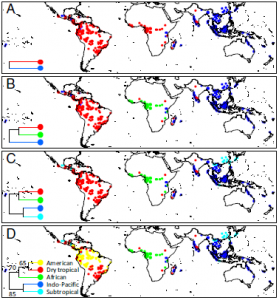Human wildlife conflict: a perpetual state of emergency

Buffer zone of the Mudumalai Tiger Reserve. The state of emergency: the reserve is already overgrazed by domestic cattle.
A paper (http://onlinelibrary.wiley.com/doi/10.1111/cobi.13099/abstract;jsessionid=3DF215276B3C5DAEDB135ED3C6C99422.f03t01) recently published in Conservation Biology caught me by its title: “The perpetual state of emergency that sacrifices protected areas in a changing climate”. The paper says that some protected areas in the USA will be used to alleviate farmers’ problems due to climate change. The question one might ask is: “why can’t farmers find new places in order to make a living?” But of course, there is nowhere else to go.
We have the same kind of resource-related problem near the Nilgiris Biosphere Reserve. People get killed by large wildlife because animals such as the elephant, the gaur (Indian bison) enter human settlements. By and large the cohabitation is peaceful, but accidents happen. Here, the question is: “why don’t we kill the problematic animals?” The answer is because the Asian elephant is an endangered species and the gaur a vulnerable species. In other words, the survival of both species is in jeopardy. Again, the “resource” (the animals we are talking about), have become rare, too rare to attempt something drastic with them.
In 1960 when the world human population was 3 billion, scientists were already warning of the potential catastrophic outcomes of over population – the transformation of the biosphere into a wasteland. In the 1960s, it was still possible to target “problematic” animals, even to allow hunting (the British already had a heavy hand on “pests” in India though). This possibility has now vanished. As a civilization, we haven’t avoided this nightmare where margin for solutions are narrow or nonexistent. At present, all solutions are “tough calls”. Or we lose a precious human life or a job, or the last individuals of threatened species or some ecosystem. We will “lose” as long as our population does not go down, and it may be too late for our children to recover a decent biosphere.
Jean-Philippe Puyravaud

